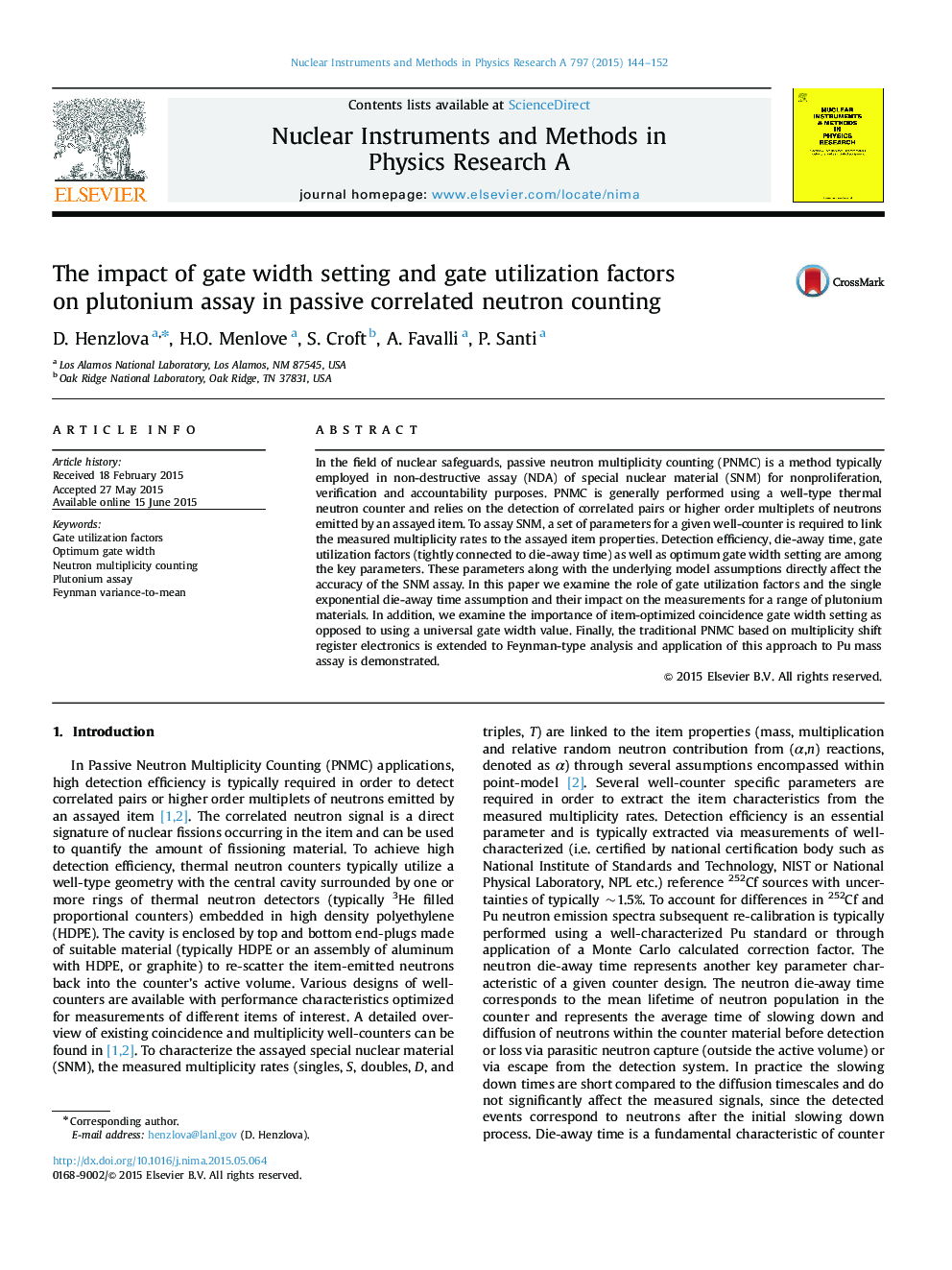| Article ID | Journal | Published Year | Pages | File Type |
|---|---|---|---|---|
| 8172511 | Nuclear Instruments and Methods in Physics Research Section A: Accelerators, Spectrometers, Detectors and Associated Equipment | 2015 | 9 Pages |
Abstract
In the field of nuclear safeguards, passive neutron multiplicity counting (PNMC) is a method typically employed in non-destructive assay (NDA) of special nuclear material (SNM) for nonproliferation, verification and accountability purposes. PNMC is generally performed using a well-type thermal neutron counter and relies on the detection of correlated pairs or higher order multiplets of neutrons emitted by an assayed item. To assay SNM, a set of parameters for a given well-counter is required to link the measured multiplicity rates to the assayed item properties. Detection efficiency, die-away time, gate utilization factors (tightly connected to die-away time) as well as optimum gate width setting are among the key parameters. These parameters along with the underlying model assumptions directly affect the accuracy of the SNM assay. In this paper we examine the role of gate utilization factors and the single exponential die-away time assumption and their impact on the measurements for a range of plutonium materials. In addition, we examine the importance of item-optimized coincidence gate width setting as opposed to using a universal gate width value. Finally, the traditional PNMC based on multiplicity shift register electronics is extended to Feynman-type analysis and application of this approach to Pu mass assay is demonstrated.
Keywords
Related Topics
Physical Sciences and Engineering
Physics and Astronomy
Instrumentation
Authors
D. Henzlova, H.O. Menlove, S. Croft, A. Favalli, P. Santi,
